In this article, let's join Soumaki on a culinary adventure to explore the top 10 healthy bowls around the world. Check to see how many of the following 10 bowls you have tasted.
1. Pho Bowl - Vietnam
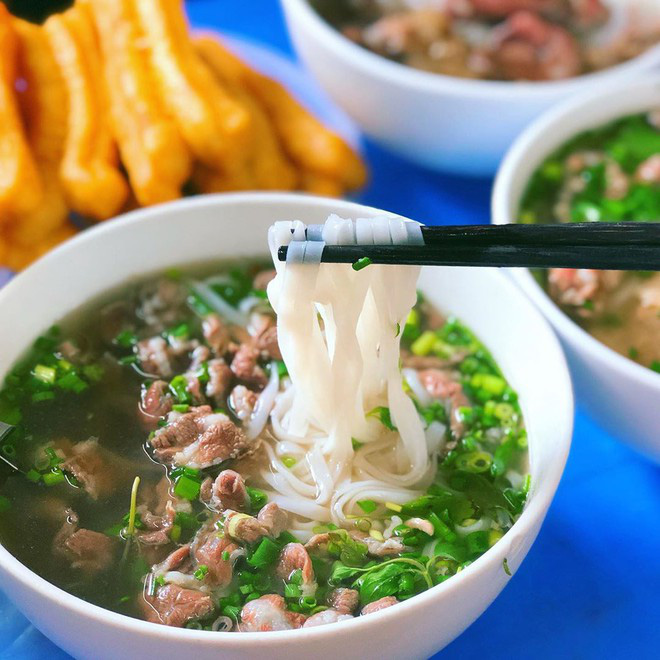
At the top of the list of healthy bowls is Vietnam's national dish: Pho. Pho is not only delicious but also highly nutritious, loved by Vietnamese people and international friends alike.
Ingredients in a bowl of pho:
The ingredients in a bowl of pho may vary depending on the preparation method and region. However, a bowl of pho typically includes the following ingredients:
-
Pho noodles: flat noodles (in the North), thin and round noodles (in the South)...
-
Broth: a rich broth made from beef bones, beef, spices...
-
Meat: usually thinly sliced beef, but can also include chicken, pork, shrimp...
-
Herbs: including coriander, basil, herbs, cilantro, lettuce, onion, fried onion, bean sprouts...
-
Seasonings: ginger, garlic, black pepper, purple onions, sugar, lime, chili, peanuts...
-
Dipping sauce: sweet fish sauce, salty fish sauce, chili sauce, black bean sauce, satay sauce...
Nutritional value:
An average bowl of pho may contain:
Note:
-
The nutritional value of each bowl may vary depending on the amount of noodles, ingredients, toppings, and seasonings used.
-
Some places may use high amounts of sugar and sodium when preparing pho, so it's important to choose reputable places to eat and consume in moderation.
2. Oden Bowl - Japan
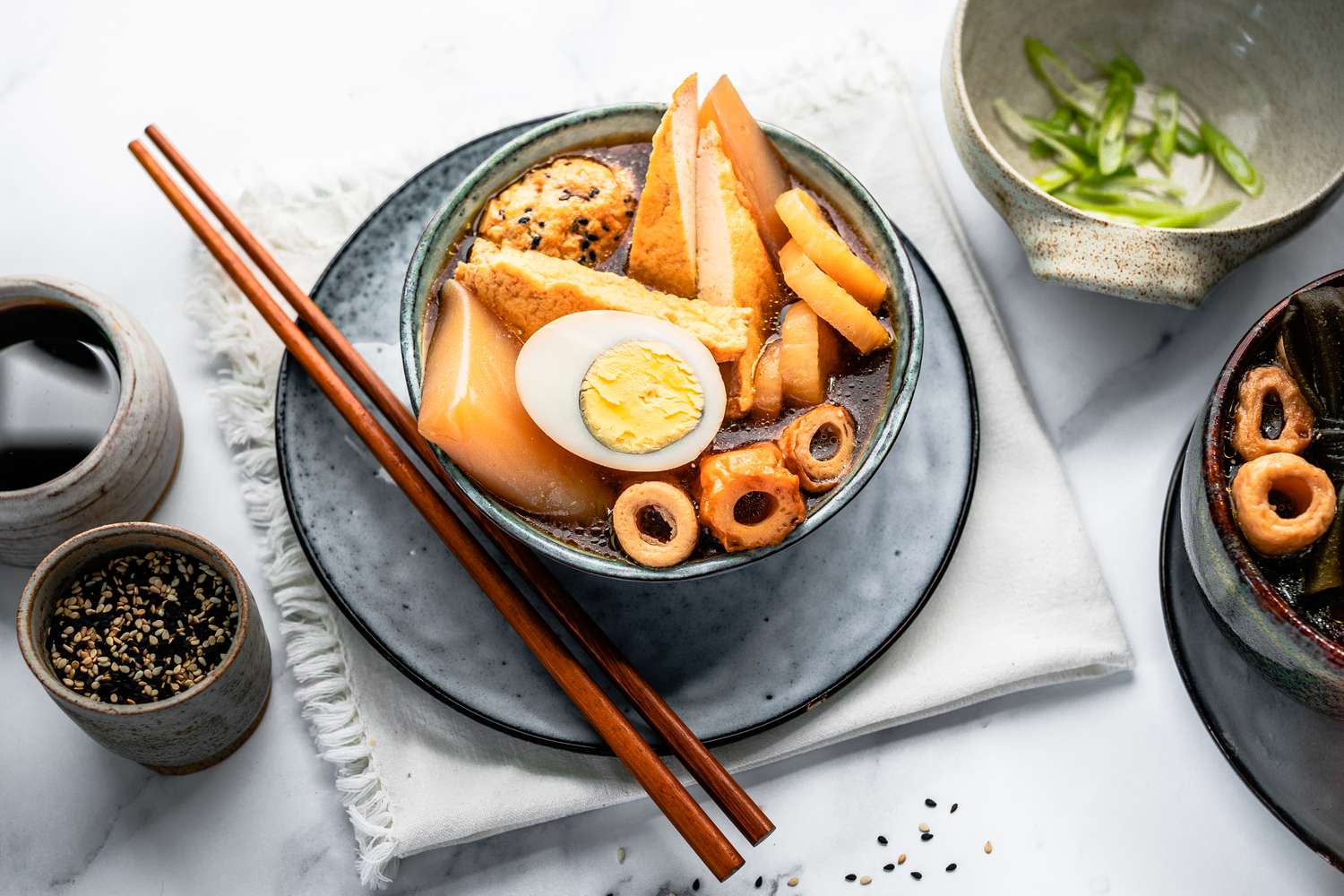
Oden is a traditional bowl that is highly popular during the winter season in Japan, helping to warm up the body and uplift the spirit in cold weather. Depending on the characteristics of each region, oden is prepared differently but always maintains the essence of sweet broth and fresh ingredients.
Ingredients in a bowl of oden:
-
Broth: made from seaweed, dried fish, mirin, soy sauce…
-
Fish cake: hanpen, chikuwa, kamaboko, stuffed kinchaku, satsuma-age, ganmodoki, konnyaku, sausage...
-
Meat: beef, pork, squid, boiled eggs...
-
Vegetables: daikon, potatoes, carrots, turnips, white radish, tofu...
-
Dipping sauce: miso or sooty sauce…
Nutritional value:
On average, a bowl of oden contains:
Note:
-
The specific nutritional value of each bowl of oden may vary depending on the ingredients used and the cooking method.
-
Be careful when eating oden, as the ingredients have been simmered for a long time and may be very hot, which can cause mouth burns.
-
If you want to lose weight, eat less fish cakes and more konnyaku (yam cake), turnips, and tofu.
See more: How many calories to eat a day to lose weight effectively?
3. Tom Yum Bowl - Thailand
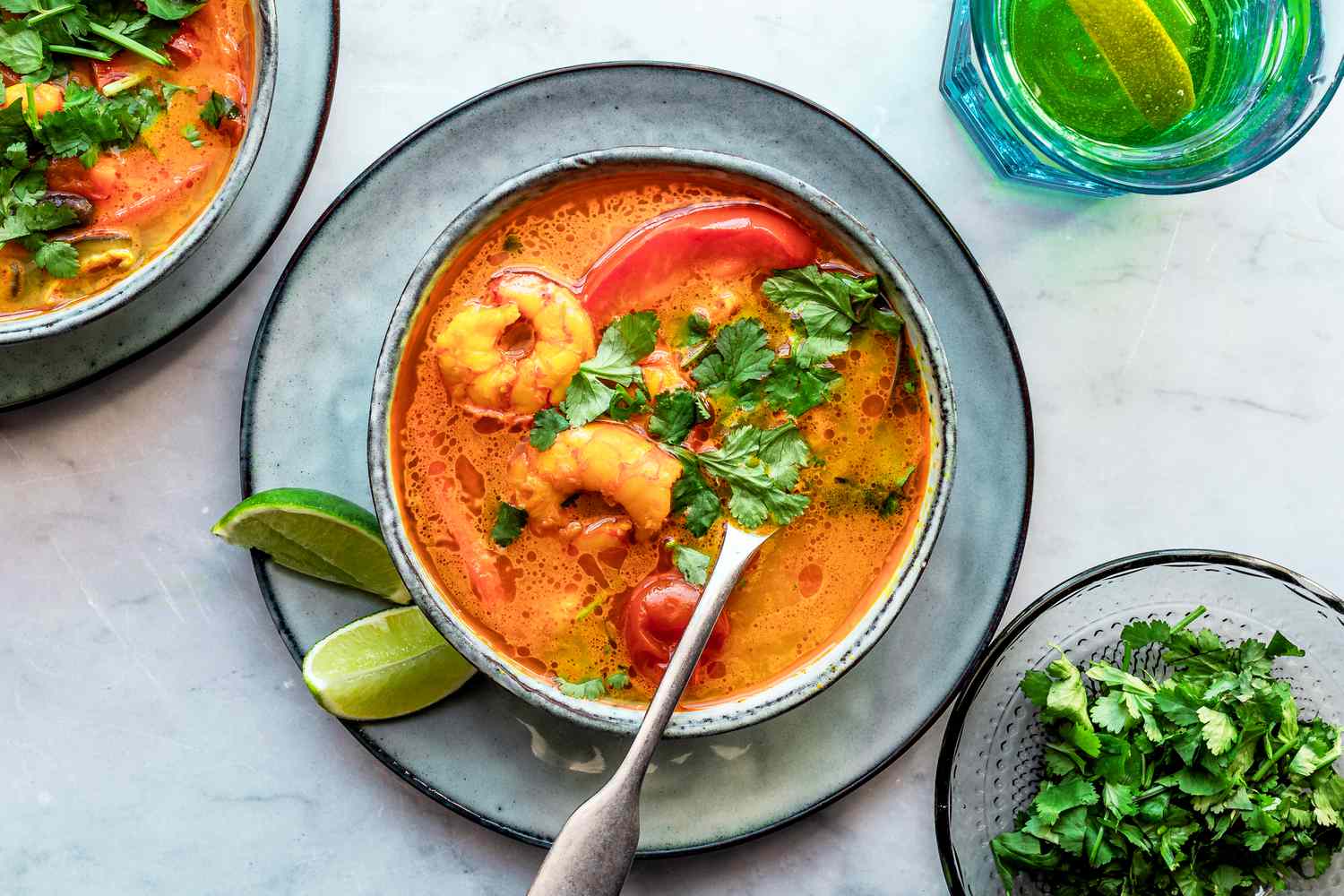
Tom Yum is a famous dish originating from Central and Eastern Thailand. This dish has strong antioxidant effects, enhances immunity, promotes blood circulation, and detoxifies the body.
Ingredients in a bowl of Tom Yum:
Tom Yum has many different types. If shrimp is the main ingredient, the dish is called "Tom Yum Kung". If chicken is the main ingredient, the dish is called "Tom Yum Kai"... Typically, a bowl of Tom Yum includes the following ingredients:
-
Broth: cooked from water, lemon leaves, ginger, galangal, lemongrass, chili, onions, mushrooms...
-
Meat: shrimp, chicken, squid...
-
Vegetables: mushrooms, carrots, bell peppers, coriander, herbs, tapioca...
-
Seasonings: curry, garlic, chili, black pepper, fish sauce, sugar…
Nutritional value:
On average, a bowl of Tom Yum contains:
Tom Yum can also provide some vitamins and minerals, including vitamin C, vitamin B6, potassium, magnesium...
Note:
-
Tom Yum has a strong spicy flavor, so it may not be suitable for everyone, especially those with digestive issues.
-
Some Tom Yum dishes may contain high levels of sodium and sugar, so it's important to choose the right restaurant and consume in moderation.
4. Bibimbap Bowl - South Korea
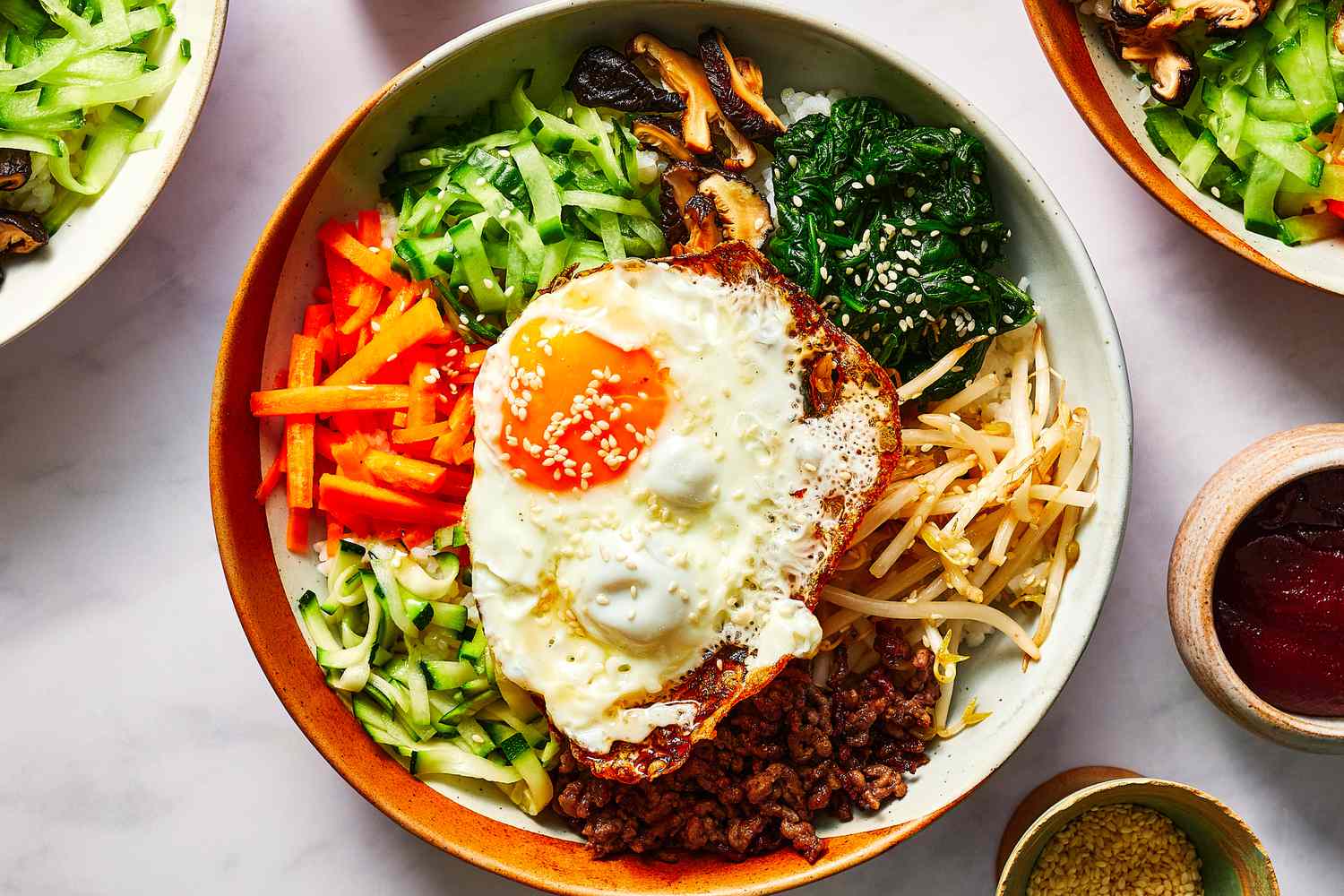
Bibimbap is a traditional South Korean dish, also known as mixed rice. This dish is easy to prepare and perfectly balances flavor and nutrition.
Ingredients in a bowl of bibimbap:
-
Rice: usually white rice
-
Vegetables: spinach, cabbage, bean sprouts, carrots, shiitake mushrooms, bell peppers, bean sprouts, sauteed onions...
-
Meat: tender beef, pork, or chicken
-
Egg: raw or fried egg
-
Sauce: gochujang sauce (red bean paste sauce), or other sauces such as soy sauce, garlic butter sauce, sesame sauce…
Nutritional value:
An average bowl of bibimbap may contain:
Note:
-
The specific nutritional value may vary depending on the type and amount of ingredients used.
-
Limit the use of sauces that are high in sugar or salt if you don't want to consume too many calories.
-
Choose ingredients rich in fiber, protein, and good fats such as eggs, beans, vegetables, and meat to provide energy and help with weight loss.
5. Chana Masala Bowl - India
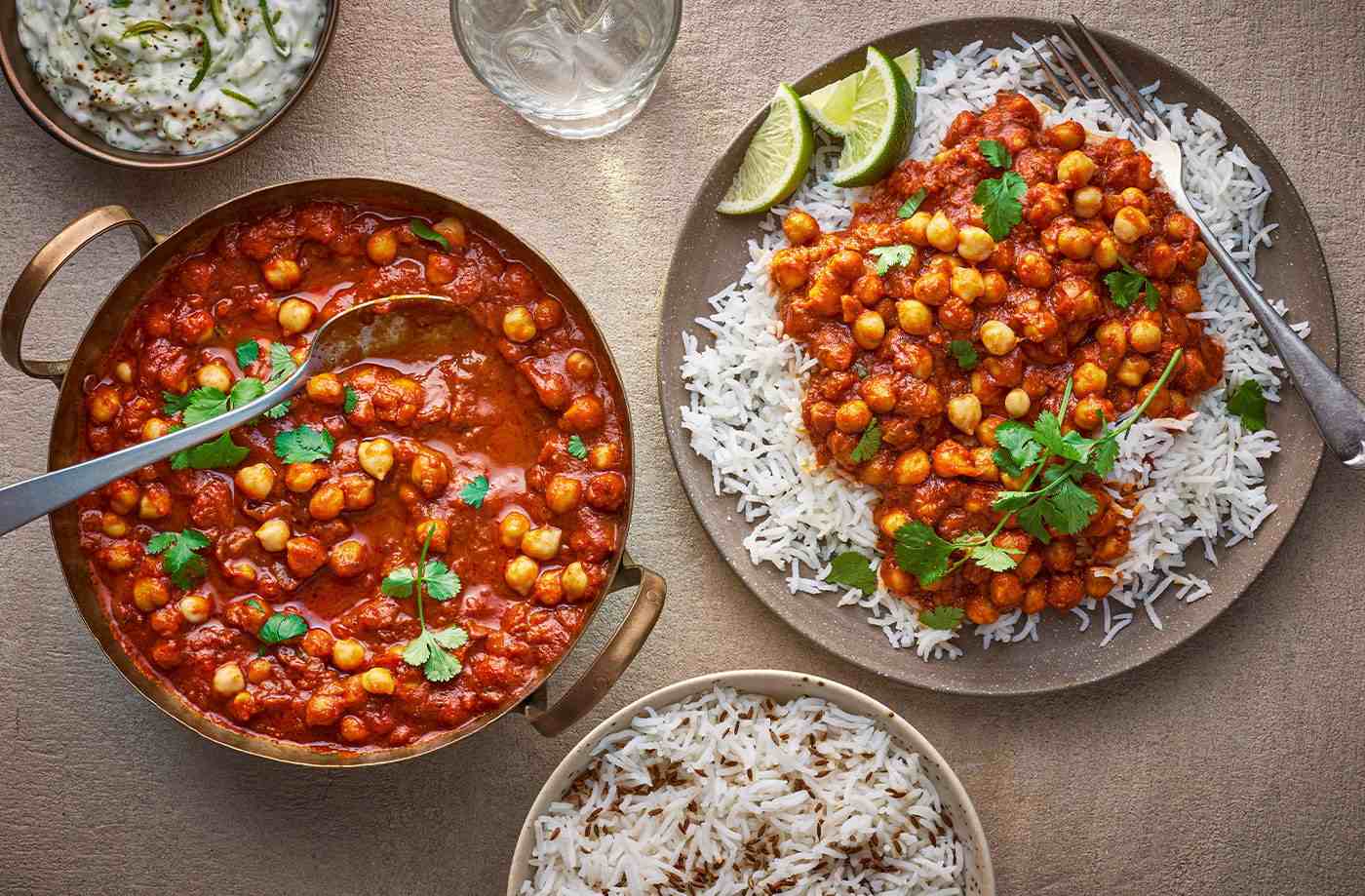
Chana masala is a traditional dish from northern India. Chana means "chickpeas" and masala means "spices," so this is a vegetarian chickpea curry. This dish has a delicious flavor, is not too spicy, and is a healthy addition to the Indian meal.
Ingredients in a bowl of chana masala:
-
Vegetables: chickpeas, tomatoes, onions, cilantro...
-
Spices: ginger, garlic, chili, cumin, coriander, fennel seeds, turmeric powder, chili powder, pepper, cinnamon, cloves…
Nutritional value:
According to the USDA nutrition chart, 100g of chana masala contains approximately:
-
Calories: 138 calories
-
Protein: 6.2g
-
Carbs: 22.3g
-
Fat: 2.6g
-
Fiber: 6.2g
Chana Masala helps improve digestive health and reduces the risk of cardiovascular disease. In addition, the spices in chana masala may have anti-inflammatory and pain-reducing effects.
Note:
-
Different ingredients and cooking methods may affect the nutritional information of the dish.
-
Chana masala is usually eaten with naan bread, chapati, or basmati rice, jeera rice...
-
There are many variations of this dish, such as chana aloo masala (with potatoes), chana palak masala (with spinach), chana paneer masala (with paneer cheese…
Soumaki - a healthy and balanced bowl of food
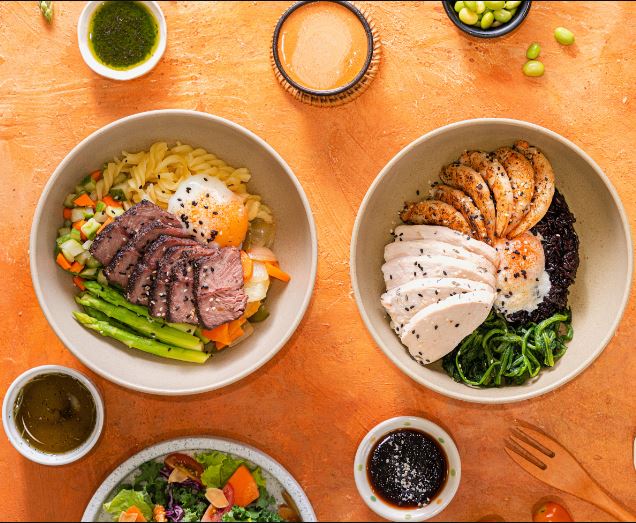
Our healthy restaurant Soumaki provides a wide range of high-quality nutritious meals. If you have tried the five dishes mentioned above several times and want to try something different, come and enjoy the excellent taste at Soumaki!
Our dishes are always balanced with enough nutrients, and the nutritional information of the three major macronutrients - protein, carbs, and fat - is fully displayed for your convenience. If you wish, you can also customize your own meal by arranging the ingredients in the bowl. There are four main ingredients in a Soumaki bowl:
-
Protein: chicken breast, salmon, beef, and basa fish
-
Carbs: baked sweet potato/potato, soba noodles, brown/white rice & pasta
-
Side: various vegetables such as broccoli, asparagus, mushrooms, and salad...
-
Sauce: more than 10 types of characteristic sauces depending on your taste and preference
Conclusion
Did you notice that all 5 healthy bowls around the world from part 1 come from Asia? Stay tuned for part 2 with 5 healthy bowl dishes from Europe and the Americas.
See more: Top 10 healthy bowls around the world (Part 2)